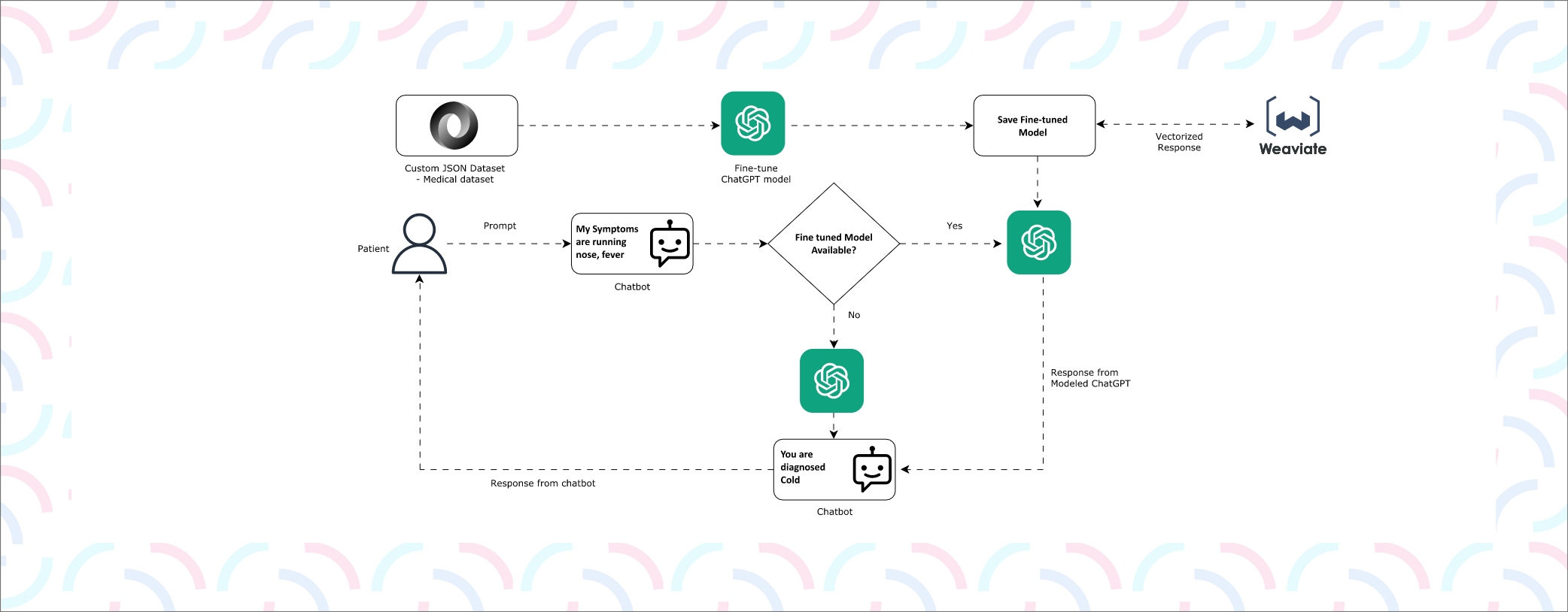Overview
A chatbot solution trained with the medical dataset to provide accurate diagnosis according to the symptoms of the users and implemented in a mobile app
At A Glance

Industry
Healthcare

Region
USA

Duration
4 Weeks
Technical Stack





Client Profile
The client is a healthcare solution provider in the United States with more than 20 hospitals across the country.
Challenge
- The client wanted a chatbot powered by ChatGPT to get the diagnosis of the patient based on the symptoms.
- The client also wanted to train the chatbot model with their years of experience and medical data to get accurate results of the diagnosis.
- The client also wanted its customers to have access to a digital doctor 24/7 with whom they can consult virtually without having to talk to an actual doctor for medication.

Solution
- Seaflux developed a solution and implemented the RAG (Retrieval-Augmented Generation) architecture, a state-of-the-art approach that integrates information retrieval and language generation. The core of the solution revolved around three key components: the Retrieval Component, the Language Generation Component, and the Integration Layer.
- Retrieval Component (LlamaIndex): We utilized LlamaIndex, a powerful data framework, to create a vectorized index from the medical document data. LlamaIndex would efficiently retrieve relevant passages from the proprietary dataset based on user symptoms.
- Language Generation Component (OpenAI GPT-3.5 Turbo): OpenAI's GPT-3.5 Turbo served as the language generation component of the solution. It generated responses based on both the user input and the retrieved information, ensuring contextually rich and coherent answers.
- Integration Layer (LangChain): LangChain acted as the integration layer, seamlessly connecting the retrieval and language generation components. It abstracted away the complexities associated with the interaction between LlamaIndex and GPT-3.5 Turbo, ensuring smooth communication and dynamic responses.
- By leveraging the RAG architecture, a holistic approach is achieved, where the chatbot could retrieve specific information from the dataset and generate diagnosis responses that were not only contextually relevant but also tailored to individual user queries and their symptoms.
- The solution is integrated with the mobile app of the client for its users to utilize the solution 24/7 and self-diagnose minor ailments.
Key Benefits
- The client saved the precious time of doctors from diagnosing common problems like colds so that they could spend their time on more complex cases, which increased by 7%.
- The mobile app downloads increased by 39%, and the new user registrations increased by a handsome 43%.
Develop your next idea with usGet in touch






